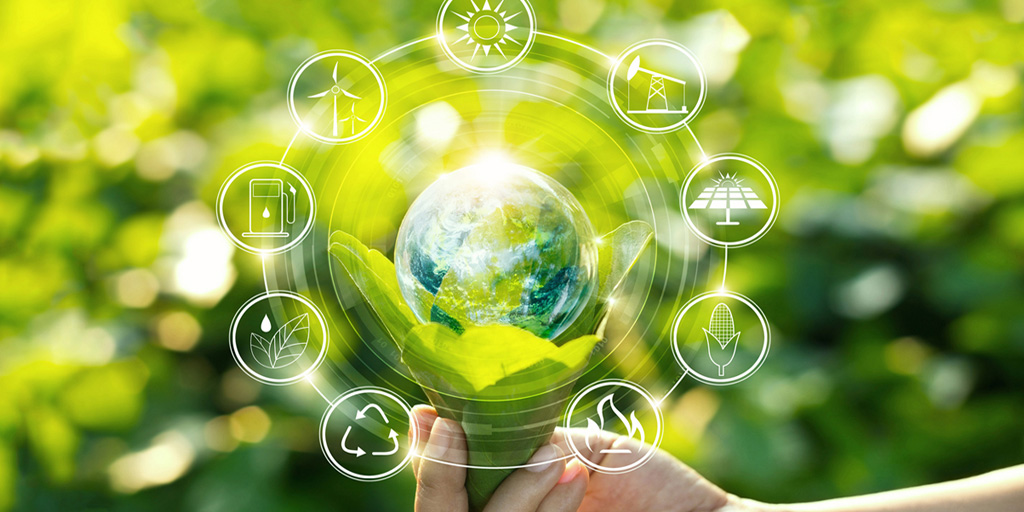INVESTMENT STRATEGIES
The Energy Group, comprising outstanding specialists and innovative technological partners from various business sectors, focuses on promoting and implementing solutions in the field of alternative energy. We tailor our commitment to individual needs and the stage of development of each project, allowing us to flexibly respond to changing requirements and the dynamic market environment.
Our offer includes a comprehensive package of services covering the full range of activities from initial analysis, through the development of detailed project documentation, to the implementation of key stages leading to achieving energy independence and significant energy cost reductions. We offer support at every stage of the investment process:
- Expertise and Analysis: At the initial stage, we conduct detailed expertise aimed at assessing the energy potential, analyzing the possibilities of using local renewable sources, and assessing the carbon footprint of the project. This ensures that our actions are always based on solid data and precise diagnosis.
- Planning and Designing: We develop advanced technical projects that form the basis for the construction of efficient and sustainable energy installations. Our design solutions combine innovation with practical aspects of implementation, ensuring cost optimization and maximizing benefits for the investor.
- Energy Transformation: We assist companies in transitioning to sustainable energy sources, offering advice and support in choosing the best technologies, planning the modernization of existing energy systems, and implementing innovative solutions.
- Project Implementation: We manage the process of building energy installations from scratch, ensuring coordination of work, supervision of quality of execution, and timeliness. Our experts supervise every stage of implementation, from site preparation to commissioning and optimization of system operation.
- Independence and Savings: Our ultimate goal is to provide customers with full energy independence and significant savings in energy costs, which can range from 30% to 50% compared to traditional sources.
By collaborating with us, you gain access to the latest technologies, expert knowledge, and individually tailored solutions that will contribute to increasing energy efficiency, reducing greenhouse gas emissions, and building a sustainable future for your business.

ENERGY TRANSFORMATION
Energy transformation is a key process occurring in many European Union member states, aimed at transitioning to a sustainable economy through the use of renewable energy sources, improving energy efficiency, and reducing energy consumption. This process is in line with the concept of sustainable development and aims to gradually eliminate coal, uranium, and other non-renewable energy sources from the energy ecosystem.
Key elements of energy transformation include:
- Renewable Energy Sources (RES): Our priority is to increase the share of renewable energy, such as solar, wind, hydro, and geothermal energy, in the global energy balance. Utilizing RES contributes to reducing greenhouse gas emissions, thus serving as an ecological alternative to fossil fuels.
- Energy Efficiency: Improving energy efficiency in various sectors, including construction, industry, and transportation, is also of paramount importance. The goal is to minimize energy losses and maximize the efficiency of the energy used.
- Electrification: Electrification of various aspects of economic life is another significant component of the transformation, which can be supported by energy from renewable sources, further contributing to reducing harmful gas emissions.
- Energy Storage Technologies: Modern methods of energy storage, including battery technologies, are being developed to efficiently store excess renewable energy and utilize it during periods of increased demand.
- Modernization of Energy Networks: The infrastructure of energy networks is being adapted and developed to enable the effective transmission of renewable energy from its production sites to consumers.
- Regulations and Policy: Appropriate legal and policy regulations supporting the transformation, such as emission trading systems, subsidies for RES, or energy efficiency standards, are necessary.
The goal of energy transformation is to achieve a sustainable, low-emission, and balanced energy system that contributes to mitigating climate change, improving air quality, and increasing energy independence. It is a crucial component of global efforts towards sustainable development and combating climate change.
Renewable energy sources, such as wind, biomass (including landfill gas and biogas), water, sun (thermal and photovoltaic energy), geothermal, and tidal energy, offer alternatives to fossil fuels, nuclear fuel, and natural gas, thus playing a key role in energy transformation.
Realizing the full potential of energy transformation requires integrated actions on multiple fronts. This comprehensive approach includes, among others, energy conservation and efficiency enhancement through better thermal insulation of buildings, cogeneration systems implementation, and heat and energy recovery. Furthermore, the implementation of smart metering systems allows for optimizing energy consumption, adapting it to moments when it is cheapest and most readily available.
According to forecasts by the International Energy Agency, gradually increasing the share of renewable energy in the global energy mix could lead to a situation where, within the next 50 years, RES become the dominant, or even the only, energy source worldwide. Such development would significantly impact reducing greenhouse gas emissions.
In Poland, the directions of energy transformation focus on the following areas:
- Improving energy efficiency: Reducing energy consumption and maximizing efficiency in using available resources.
- Increasing supply security: Diversifying energy sources and supply routes to enhance the country’s stability and energy independence.
- Diversifying the electricity generation structure: Developing various energy sources, including nuclear energy, to reduce dependence on a single type of fuel.
- Developing the use of renewable energy sources: Incorporating more energy from RES into the national energy mix.
- Developing competitive fuel and energy markets: Stimulating competition in the energy market, which can lead to lower prices and increased innovation.
- Limiting the impact of energy on the environment: Implementing environmentally friendly technologies and minimizing the negative impact of energy production and consumption on the environment.
Each of these elements plays an important role in transforming the Polish energy sector towards a more sustainable and ecological future.

CLIMATE NEUTRALITY
Achieving climate neutrality is currently one of the key challenges in climate protection. This state entails achieving a zero balance between the amount of greenhouse gases emitted into the atmosphere and their absorption or sequestration by natural sinks such as soils, forests, or bodies of water. Achieving climate neutrality requires both reducing greenhouse gas emissions and implementing effective mechanisms for their absorption or storage, an area in which we can offer our support.
Commitments to achieving climate neutrality have been enshrined in legal frameworks such as the “Energy Policy of Poland until 2040”. According to this document, the reconstruction and transformation of the Polish energy sector are to be based on low-emission sources such as solar (PV), wind, hydro, geothermal, and nuclear energy. Such diversification of energy sources aims to significantly reduce greenhouse gas emissions. Our company is ready to support your enterprise in implementing these solutions at every stage, from planning to implementation.






























